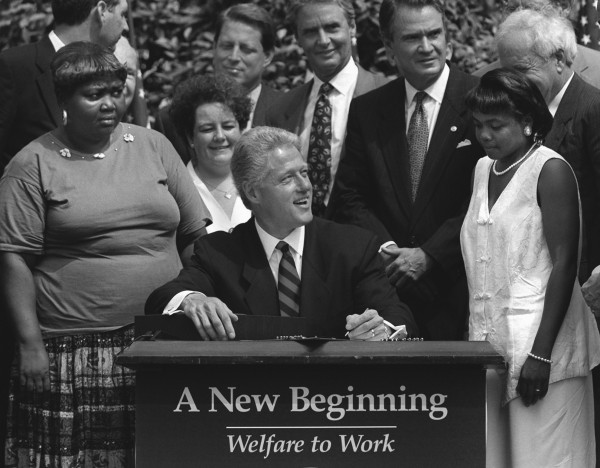 If you are interested in families, the most recent presidential election brings a trail of troubles. A lot of Americans fear what is in store in the near future and are anxious about the clear division in popular attitudes that now exists in what is supposed to be the United States. Family policy will be deeply impacted as a result of this division. For direction, Kate Gallagher Robbins and Shawn Fremstad offer a light in the darkness in a recent brief—using evidence to clarify uncertainty. Robbins is the Director of Family Policy for the Poverty to Prosperity Program at American Progress, and Fremstadis a senior research associate at the Center for Economic Policy Research, a Senior Fellow at the Center for American Progress, and a consultant on policy issues to multiple national nonprofits. They are also CCF Senior Scholars. If you want to hear more, also read this short interview with them on “Now What?”
If you are interested in families, the most recent presidential election brings a trail of troubles. A lot of Americans fear what is in store in the near future and are anxious about the clear division in popular attitudes that now exists in what is supposed to be the United States. Family policy will be deeply impacted as a result of this division. For direction, Kate Gallagher Robbins and Shawn Fremstad offer a light in the darkness in a recent brief—using evidence to clarify uncertainty. Robbins is the Director of Family Policy for the Poverty to Prosperity Program at American Progress, and Fremstadis a senior research associate at the Center for Economic Policy Research, a Senior Fellow at the Center for American Progress, and a consultant on policy issues to multiple national nonprofits. They are also CCF Senior Scholars. If you want to hear more, also read this short interview with them on “Now What?”
In their brief, 4 Progressive Policies that Make Families Stronger, Robbins and Fremstad detail key progressive policies that will strengthen working class families.
- Increase Minimum Wage
Families fare better when making more money because they have more certainty and fewer financial worries. Marriage rates help to portray that a low minimum wage is hard on families: Explain Robbins and Fremstad: “The greatest declines in marriage rates since 1970 are for working-class men, who have experienced the greatest declines in real wages, and for working-class women, who have seen little wage growth.” They argue that if the minimum wage were raised to $12 per hour, there would be increased financial resources for young, unmarried workers and even more for working parents.
- Strengthen Collective Bargaining
Unions strengthen families because they bring security and stability for those in the union—and even for those in industries where the unionization rate is higher. “Researchers find that the connection between unions and marriage is ‘largely explained by the increased income, regularity and stability of employment, and fringe benefits that come with union membership,” report Robbins and Fremstad. Workers in states that have “right to work”—a policy that limits unions’ ability to organize workers–have lower wages and fewer benefits, and states without these laws have higher rates of unionization. And that leads us back to the takeaway here: States with more unionization have better wages and benefits for all.
- Expand Medicaid
“Unfortunately, while the nation’s uninsurance rate is at an all-time low, nearly 3 million adults still lack health insurance because 19 states have yet to expand Medicaid to eligible low-income adults,” write Robbins and Fremstad. Despite the availability of federal funds to people across the country, some states deny people Medicaid who could be personally eligible. Expansion of Medicaid—health insurance for people with low or no income–would lessen stress levels, financial burdens, poor health outcomes, and family instability, all of which are heightened when Medicaid is lacking.
- Support Reproductive Rights
They write: “Policies that support reproductive rights increase people’s ability to decide when and if to have children and are linked to higher levels of educational attainment and lifetime earnings for women.” When people are not given the control over when they have children, they note, it is harmful to their economic security. Robbins and Fremstad suggest that an expansion in Medicaid to cover birth control and other reproductive health options would help economic security and in the end help to strengthen families.
Together, these four policies are a compelling baseline for a progressive, pro-family agenda. As Robbins and Fremstad note, states that are promoting these four policies have “higher levels of educational attainment and lower levels of incarceration.” Their brief offers strong, clear recommendations. We will work… and see what 2017 brings.
Originally posted 1/2/17







